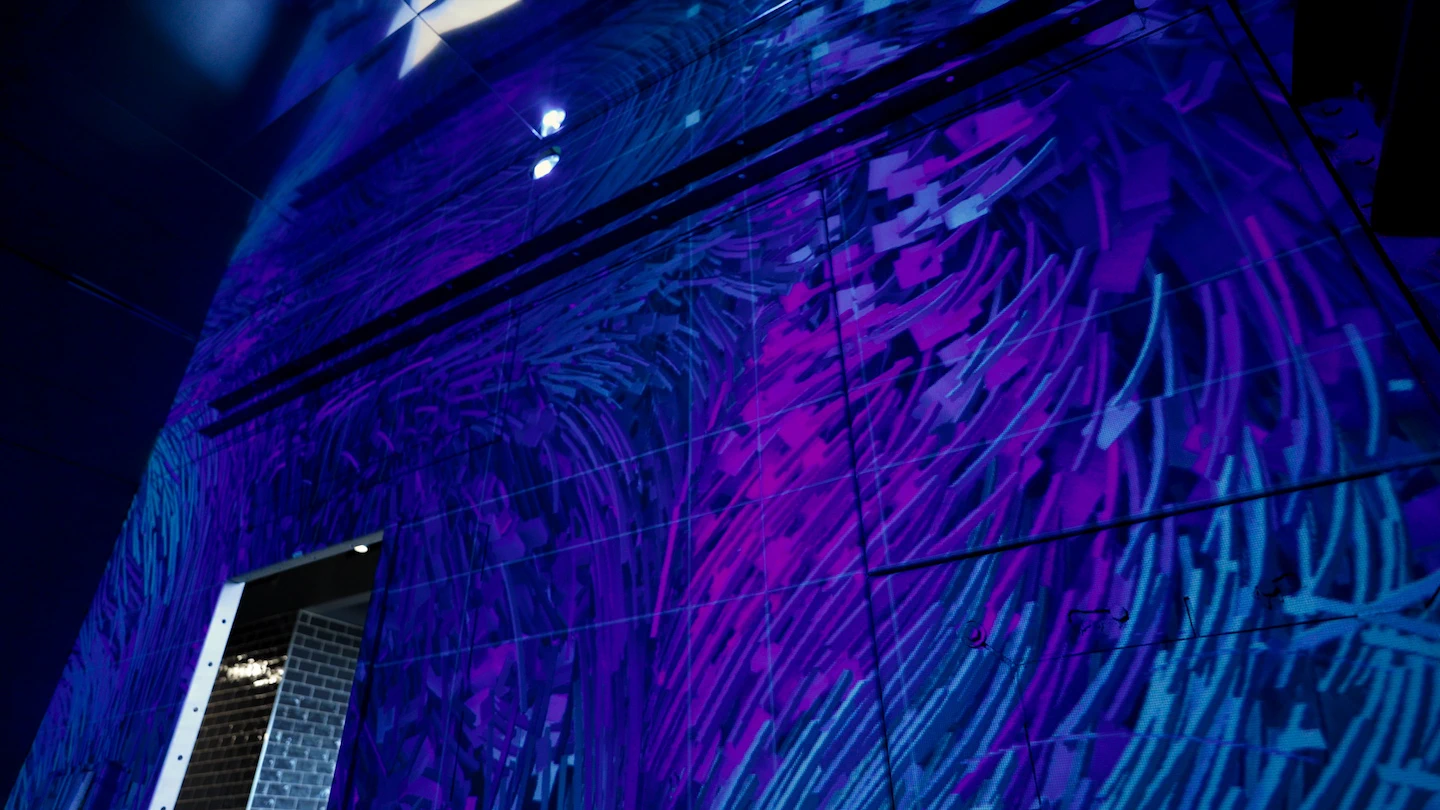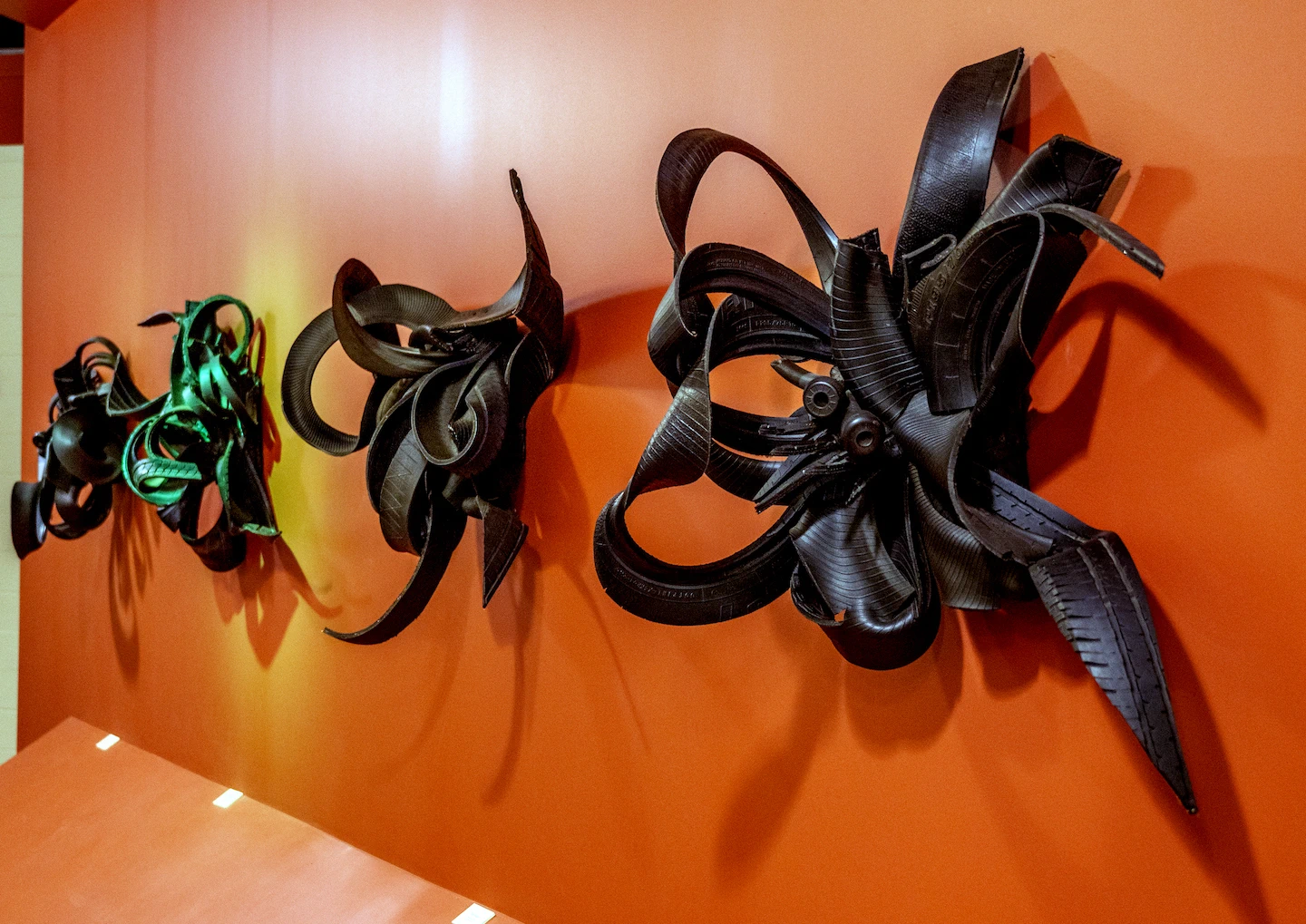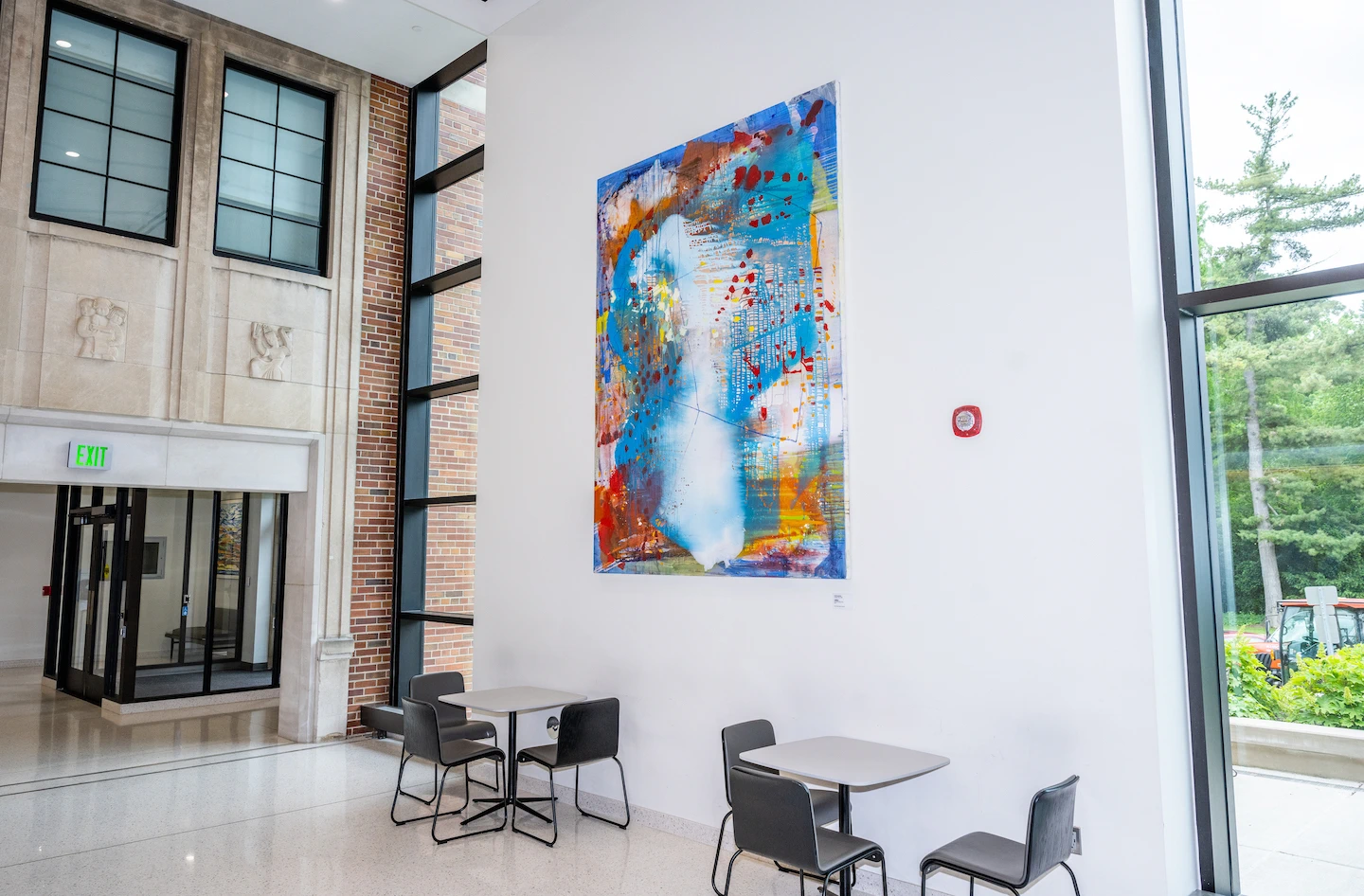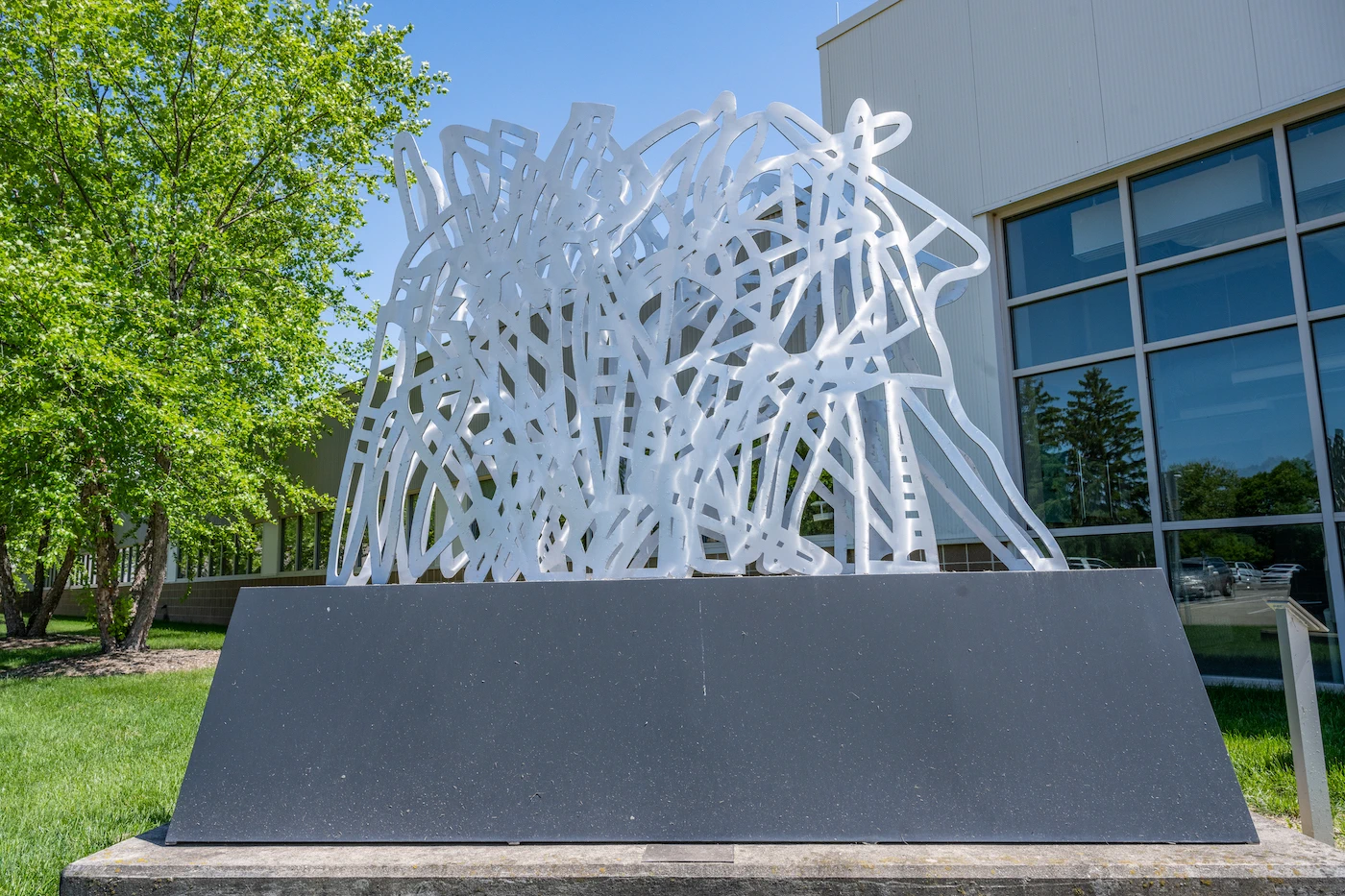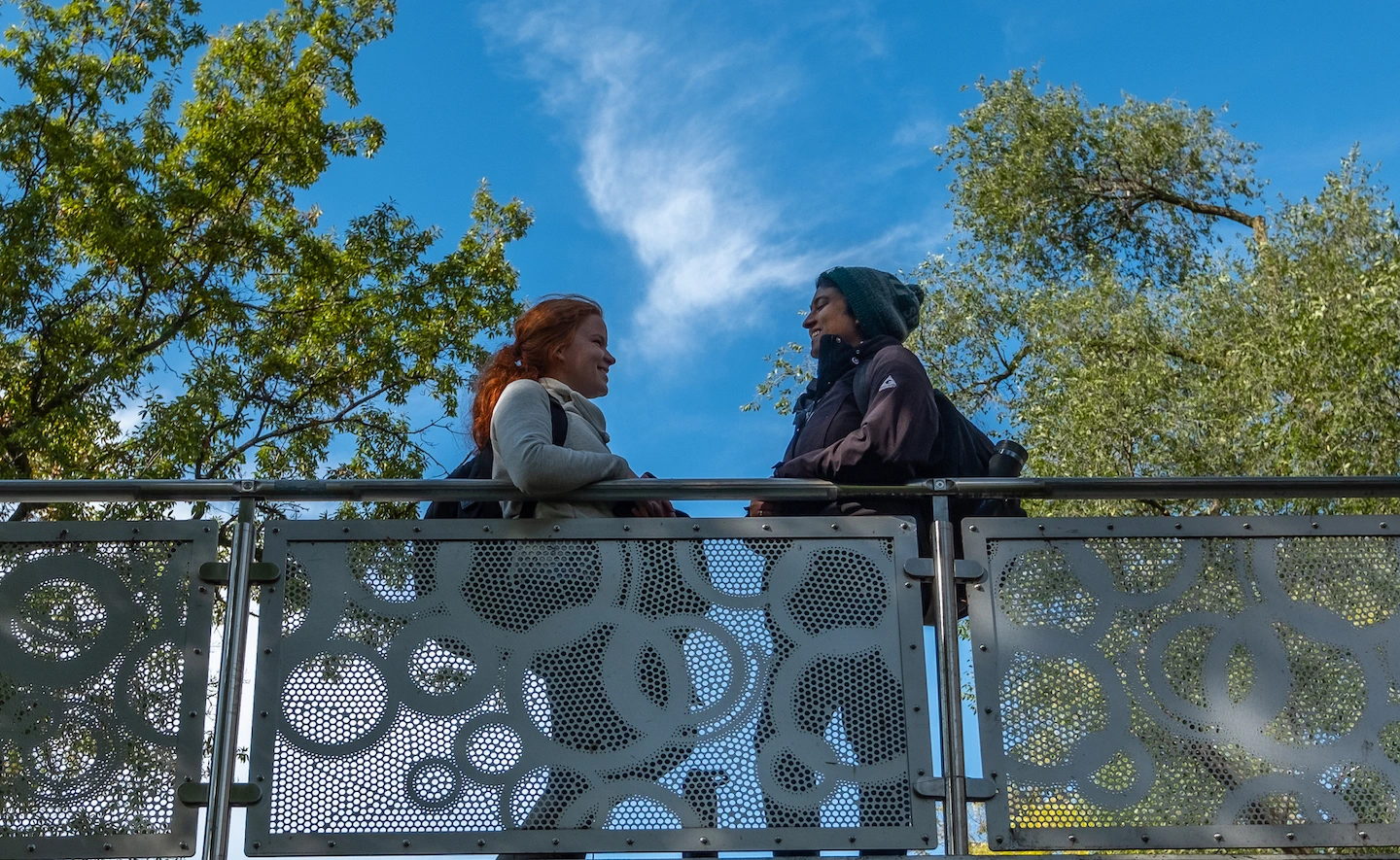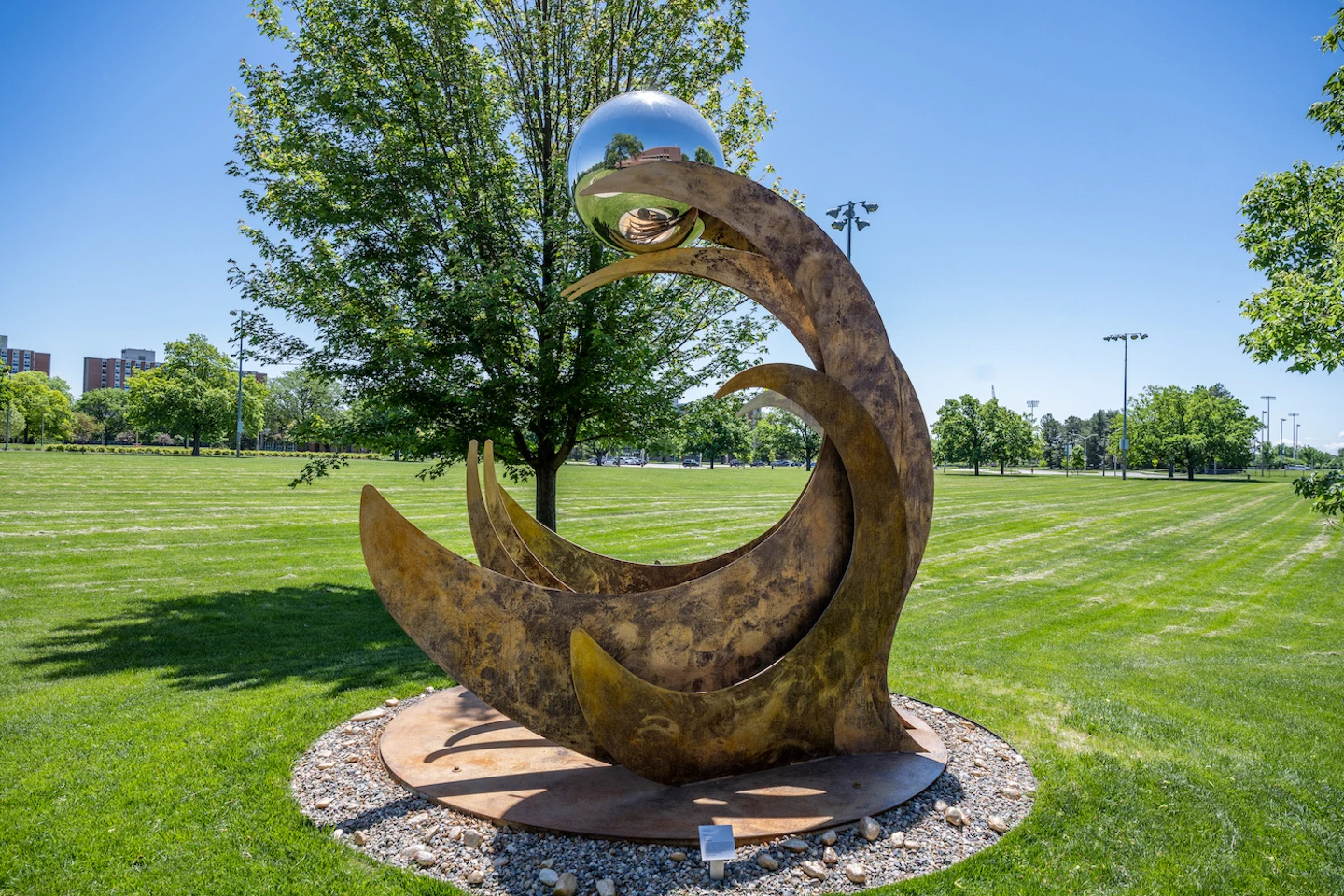Across the 5,300-acre campus of Michigan State University are more than 500 academic buildings, abundant park-like green spaces and the banks of the Red Cedar River. Interspersed throughout this landscape is a vast collection of public art, available and accessible to Spartans, community members and visitors year round.
At MSU, the arts are “irreplaceable instruments of knowledge” and are embedded in the university’s academic mission. One group ensuring this mission endures is the Public Art on Campus Committee. Established in 1999 by the MSU Board of Trustees, the committee makes recommendations on the acquisition, placement and maintenance of public art on campus. MSU dedicates one half of one percent of the cost of major renovations or new buildings (excluding utilities) to public art, capped at $250,000 per project.
“We talk about campus as being a living-learning laboratory and public art is part of that,” says Judith Stoddart, associate provost for University Collections and Arts Initiatives, who heads the Public Art on Campus Committee. “MSU’s Arts Initiative takes into account how the arts are integrated into daily life on campus for people who live, work, study and visit here.”
Since its inception, the committee has guided the installation of 153 pieces of public art on campus, including paintings, lithographs, photographs, interior and exterior sculptures, architectural glass, tile mosaics and a digital projection installation. And that’s just a portion of the trove of art on campus.
“Overall, we probably have 800 to 900 public art assets across the campus that were either part of the Works Progress Administration or reliefs on buildings that are part of the architecture, or from colleges that purchased pieces of art or were gifted artwork,” says Stephen Troost, campus planner.
Many of these works of art can be viewed on MSU’s campus art map.
